Trending
Opinion: How will Project 2025 impact game developers?
The Heritage Foundation's manifesto for the possible next administration could do great harm to many, including large portions of the game development community.

Featured Blog | This community-written post highlights the best of what the game industry has to offer. Read more like it on the Game Developer Blogs or learn how to Submit Your Own Blog Post
Here are the mechanics we used to create our co-op horror game based on our research on other games.
October 30, 2024
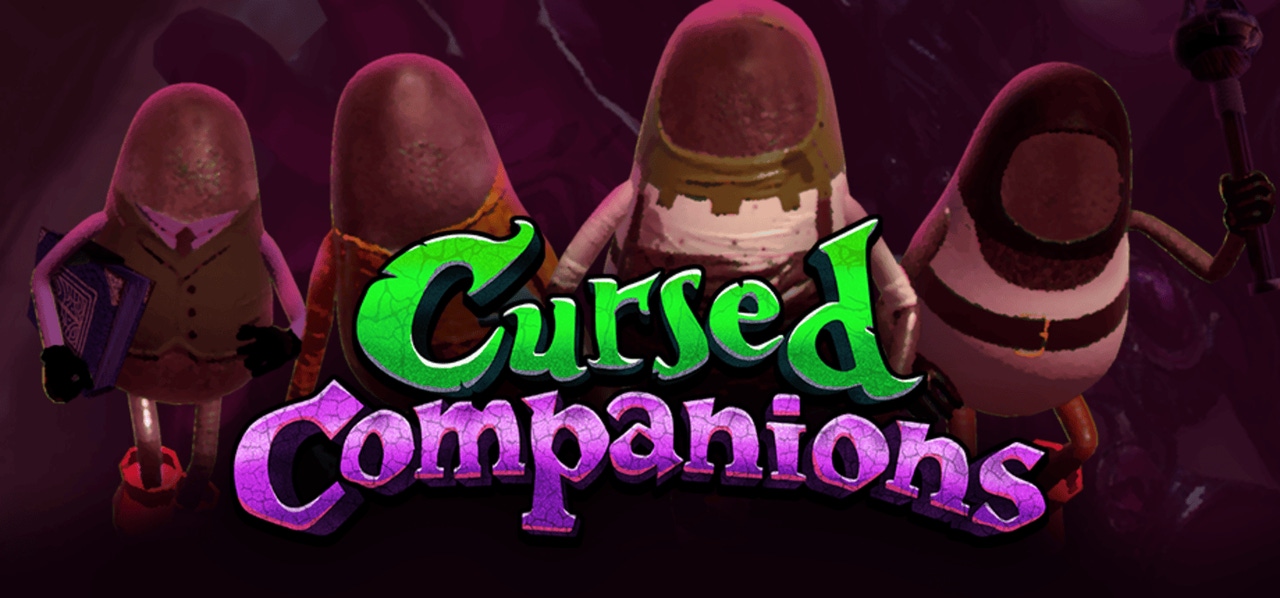
The horror genre, be it movies or games, tap into our primal fears by using various horror devices to keep players on edge. There are many ways to scare people, and good horror games know how best to use certain techniques to great effect. But one can’t always use jump scares or ghosts or gore, which is why over time many subgenres developed.
Silent Hill uses psychological horror which focuses on mental and emotional fear rather than physical threats, and uses mechanics like distorted realities and unreliable narrators. Resident Evil uses survival horror and focuses on resource scarcity and survival against dangerous enemies. There’s also horror-comedy, where it’s used to ease tension before delivering a scare, which Dead Rising does pretty well. The list goes on.
What makes a player feel scared? Some games always filled me with dread. I will never forget that feeling of playing Diablo 2, Silent Hill, back in the day, in the wee hours of the morning.
At the very core of horror is tension and anxiety, that feeling of hair standing at the back of your neck, whenever you are in danger, whenever you feel exposed.
In our co-op game Cursed Companions (https://cursedcompanions.crimson-forge.com/), you and your teammates are on a quest to retrieve treasures for the Dark Queen. The Cursed Companions are the lowest ranked minions of the Queen. They are essentially cannon fodder and have no powers or weapons.
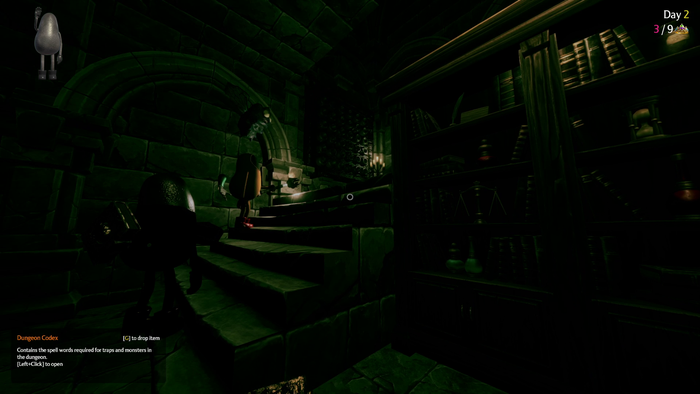
The game uses proximity chat for communication and voice-recognition as a mechanic. Players have to say the spell out loud to light a torch, or to disarm a trap. On the flip side, the game is always listening too, and like the game Taboo, some words are cursed and will harm you when you say it.
The players spawn in their floating island base, then open a portal to the Abyssal Lands, where they search for the entrance to the dungeon.
When developing the game we tried to understand the mechanics directors and developers use to elicit the psychological response from the players. Designing a scary game needed to use these techniques to create the sense of dread, tension and horror.
Sensing the Threat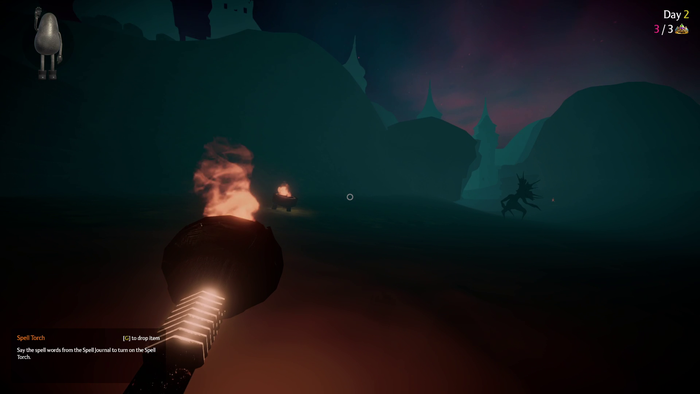
When we first tested the behaviour for our monsters, the player died before he knew anything happened. It happened so quickly he didn’t have time to feel scared. We quickly realised that the monsters should not be triggered by proximity, instead, the player has to see or hear the monster first in order for the monster to be triggered.
Create Tension: Fear of the chase
Once the monster is triggered, we need the player to experience fear. If the monster was too quick, or too powerful, the player would die instantly which isn’t what we want. As with the above point, we needed to prolong the ‘agony’.
Create Tension II: A little control but not too much
Obviously, monsters can be avoided, if the players time their moves right, or if they silently creep past them. The idea is to give some control, there is always some way to get past them. The players reach heightened state when they are actively avoiding the monsters, and then relax when they’ve got past.
Sense of Helplessness
From the start we knew this wasn’t a game with unlimited ammo and health packs where players feel invulnerable. The Cursed Companions are simply the lowest ranking, bottom of the barrel minions. Players are weak, don’t carry weapons and can’t carry much. The Abyssal Lands and Dungeon are dark, foggy and treacherous.
Isolation: Safety in Numbers and Staggered Team Attrition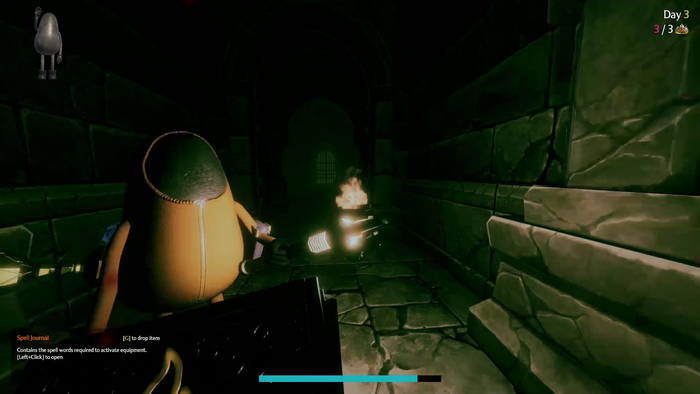
As a co-op game, players feel a sense of safety in numbers. When the game starts, everyone is happy and chatting away. But one by one as they split up or die, it gets quieter, there are less voices and the silence always brings tension.
There are moments in the game when you are alone. The feeling of isolation and fear ramps up significantly.
Uncertainty of Teammates’ Fate
With proximity chat, players can talk to each other if they are close by. In the dark dungeon, vision is limited, they have to stick together. If they split up, there is no way to know if they’re alive or dead. The uncertainty adds to the tension.
Scaling Danger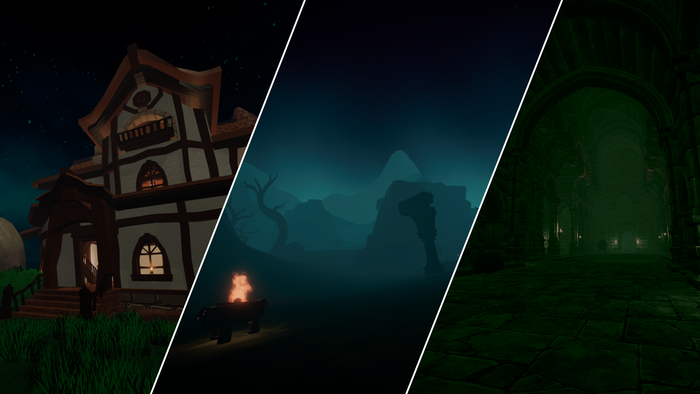
There’s Rivendell and there’s Mount Doom. The game uses the same tactic, we need to emphasize the contrast between safe and dangerous. Home is a floating island with a cosy cottage, warm light and a campfire. It feels safe. The moment players enter the portal into the Abyssal Lands, the light changes, the audio changes, you can’t see far, there’s a dark forest ahead. And when you find the dungeon, it gets worse, it’s dark, it's constricted, dangers lurk in every corner.
Comedy
This is a must have. We want moments in the game to break the tension, to give players a break and then bring up the tension again. But this humour won’t come from us, we’re not writing gags in the game (although the characters look like avocados with a butt crack). The comedy comes from the players instead. We’re giving tools for the players to goof around and create silly situations.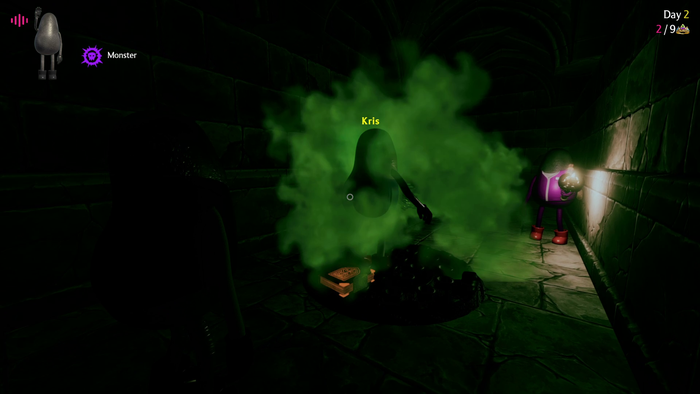
For example, we have a poison trap which slowly kills the player, but also gives him a ‘helium’ high pitched voice until he is healed. Players may find it amusing to hear their teammate say silly things in such a squeaky tone in the depths of a dark foreboding dungeon.
There are a few other mechanics we’ve used but won’t elaborate on such as haunted locations, uncanny valley (dolls and humanoids), gore, jump scares and so on as they are quite self explanatory.
Game development is always an evolving process and not all the mechanics laid out here can work all the time, it really depends on context, your audience and overall gameplay.
There were some ideas we threw out or kept for later because it didn’t help advance the gameplay too.
It’s also crucial to see how players play it, so you can adjust and make the necessary changes to improve it, there’s really no knowing how they would play the game.
Currently, we’re in the process of playtesting and refining the game’s balance. As development continues, we still have several ideas we plan to implement. We hope this article is helpful to other developers who are planning a horror game.
Cursed Companions is an upcoming release, at the time of writing we have a playtest up and a demo coming soon. Please wishlist (https://store.steampowered.com/app/3265230/Cursed_Companions/) us to give your support and watch our progress!
More links:
About Crimson Forge Studios - https://crimson-forge.com/
Cursed Companions Official Website - https://cursedcompanions.crimson-forge.com/
Cursed Companions on Steam - https://store.steampowered.com/app/3265230/Cursed_Companions/
You May Also Like